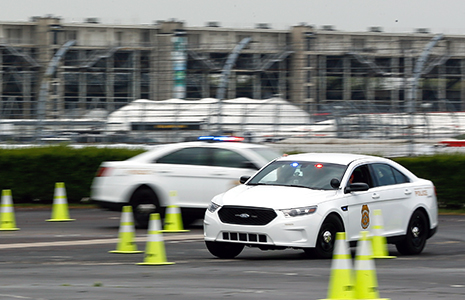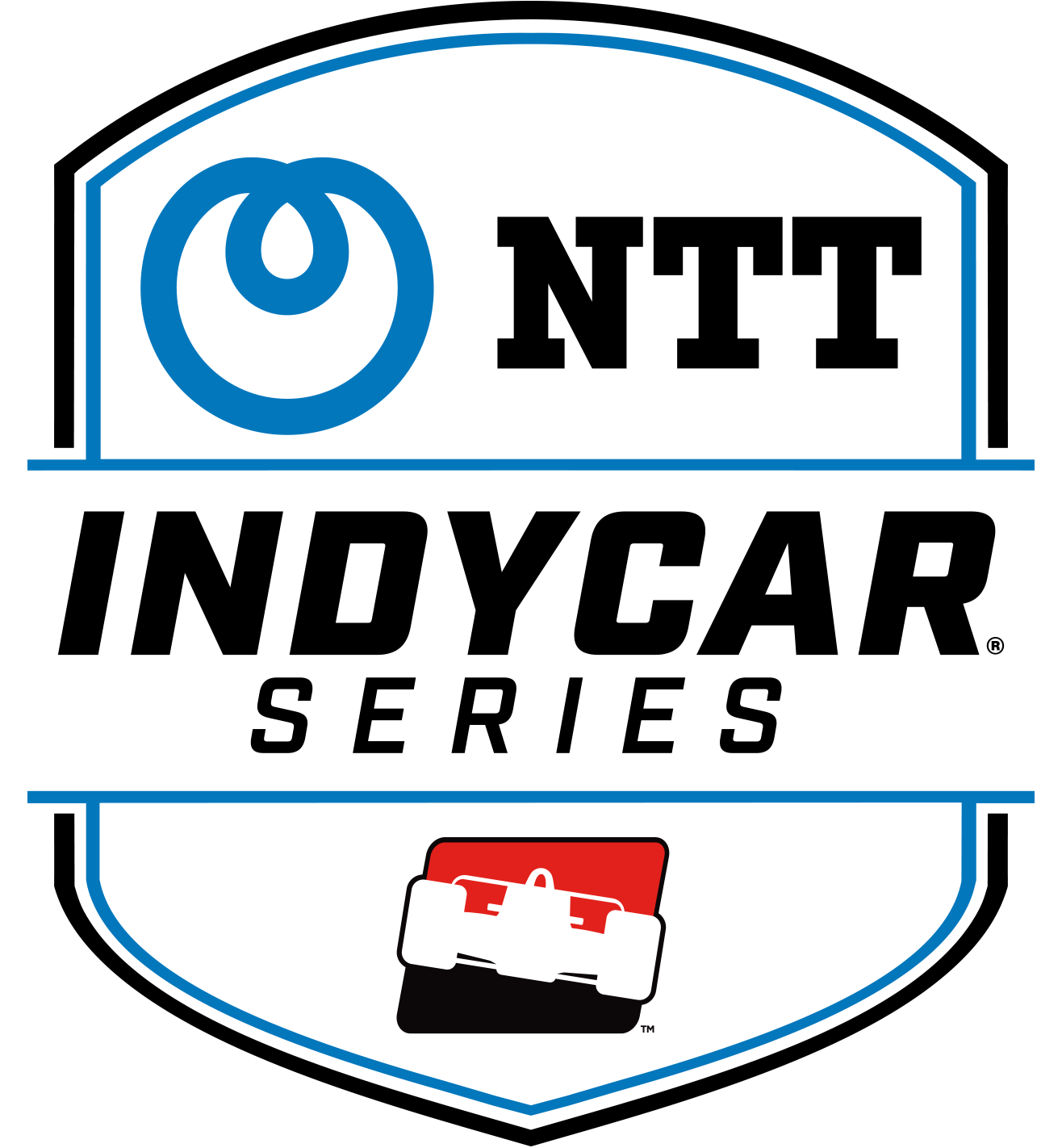Dixon shows silky skills behind wheel of police car on IMPD training course
MAY 09, 2018
Scott Dixon enjoyed screeching tires on Wednesday at Indianapolis Motor Speedway, but he wasn’t driving his No. 9 PNC Bank Chip Ganassi Racing Honda.
The 2008 Indianapolis 500 winner was burning rubber in a 2016 Ford Interceptor police car on an emergency vehicle operations course (EVOC) set up with neon green cones in the IMS Museum's
Indianapolis Metropolitan Police Department officers are required to complete this training annually. Once Dixon was up to speed, about 45 mph in the fastest straights of a winding layout with serpentine stretches going forward and backward, he was then chased by another cruiser driven by Sgt. Jay Barrow.
 “Definitely a first, to be followed by another police car with the lights on and trying to get away, which I can say honestly I’ve never been in that situation before and I don’t plan on it, either,” Dixon said.
“Definitely a first, to be followed by another police car with the lights on and trying to get away, which I can say honestly I’ve never been in that situation before and I don’t plan on it, either,” Dixon said.
Dixon was initially a passenger as Sgt. Bob Hatch gave instructions during a few laps on the challenge course, one of nine layouts upon which officers typically train. Officers also participate in a day of skills training instruction for various driving necessities, such as shuffle steering and threshold braking.
Four-time Verizon IndyCar Series champion Dixon admitted just being along for any ride is an adjustment.
“The only other time that’s been bad is with my wife (Emma),” Dixon joked. “When I’m in the passenger seat with her, that’s a little bit frightening.”
Hatch, a fleet coordinator and emergency vehicle operations instructor, wasn’t the least surprised that Dixon proved to be a quick learner.
“He did spectacular, as I knew he would,” Hatch said. “I went through all the instructions I normally give a recruit during training, but Scott has already been there and done that. It was easy for him to pick it up.”
The front straight of the course required quick thinking, as Hatch would wait until almost the last second before telling Dixon to steer left or right. Dixon handled it like a seasoned pro.
“He must drive for a living,” Barrow said, as Dixon sped by on his initial laps.
Maintaining speed while backing through the serpentine stretch proved more of a challenge.
“I did try once with the mirrors,” Dixon said. “They typically use the mirrors. I couldn’t do it. That’s when I backed right into (the cones).”
But for a first-time driver on this course, Dixon didn’t knock over that many cones. During the demonstration/instruction laps, Hatch showed he’s not perfect, either.
Fellow officers suggested Hatch was merely showing Dixon what not to do. But then Hatch hit the same two cones again. And then a third time, same cones, while weaving backward.
“I broke the cones,” Hatch admitted, which would normally mean a recruit fails on the course.
The admission was particularly amusing to Capt. Brian Whittemore, who will celebrate his 20th anniversary as an officer on June 1. Whittemore has had a few run-ins with those cones over the years. When not on duty, he’s also overseen hospitality at Chip Ganassi Racing since 1994.
“It happens,” Whittemore said of the cones. “That’s bad, but that’s OK because it’s a training setting. If you’re going to hit anything, you want it to be here and not out on the street.
“Anything you might encounter when responding to an emergency call, the whole idea is to give that to you right here in a training setting. If you do this every year, you get your recertification and you’re good to drive next year.”
Whittemore said he looks forward to the training.
“It’s the best part of being a police officer,” he said.
Dixon returns to his day job Friday as Verizon IndyCar Series drivers practice and qualify for Saturday’s INDYCAR Grand Prix. But the 37-year-old New Zealander assured he would remember this day.
“I had a ball,” he said.






















